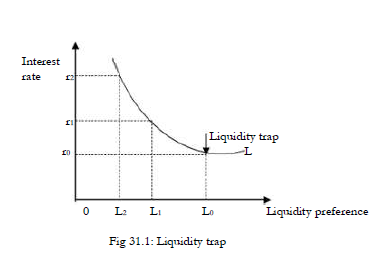Refers to the minimum rate of interest payable to persons to persuade them to part with money in terms
of savings or investment i.e. interest being the payment for the loss of liquidity. It inversely relates the
speculative demand for money to the interest rate (as a return).
This concept is derived from the Keynesian Theory (monetary theory of interest) of speculative demand
for money. It states that the rate of interest is determined by the supply of money (savings) and the
desire to hold one?s wealth in money/cash (demand for money).
It looks at money as a store of value (in itself), that is, money is held as an asset in preference to income -
yielding assets such as a government bond.
Lord John Maynard Keynes (1936) explains the speculative demand for money in terms of the buying
and selling of government securities or treasury bills (TBS) on which the government pays a fixed rate of
interest.
Its assumed that the speculative demand for money is interest elastic such that the demand curve slopes
downwards from left to right.
At the liquidity trap point, the demand cure is perfectly elastic implying that any interest rate below the
persuasive minimum interest rate represents an absolute preference for liquidity situation i.e. no
spectacular will be willing to (part with money) invest in government securities.

The demand for money is high when the interest rate is low and low when interest rate is high. At r2 its L2
and at r1 its L1 and vice versa.
Wilfykil answered the question on
February 6, 2019 at 11:43